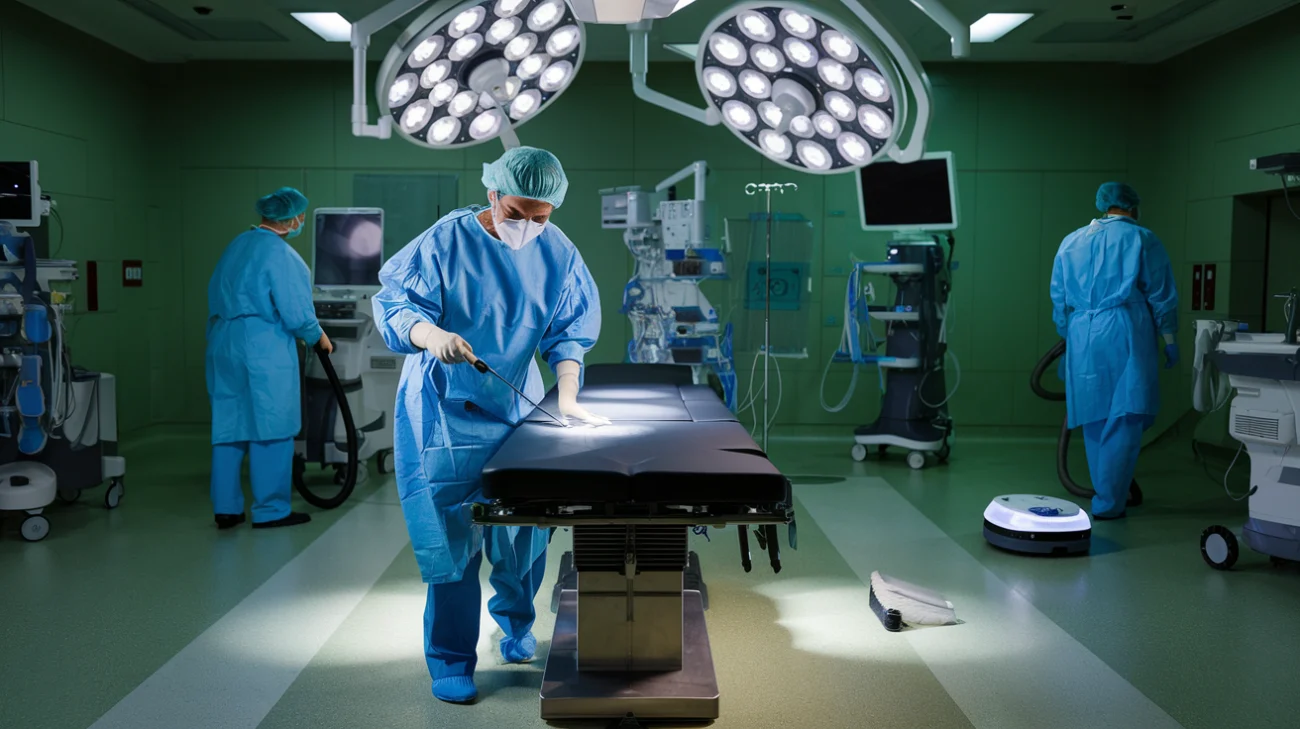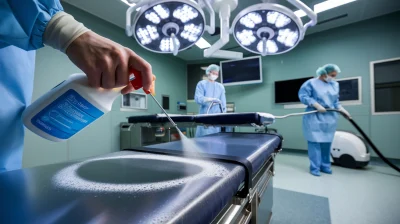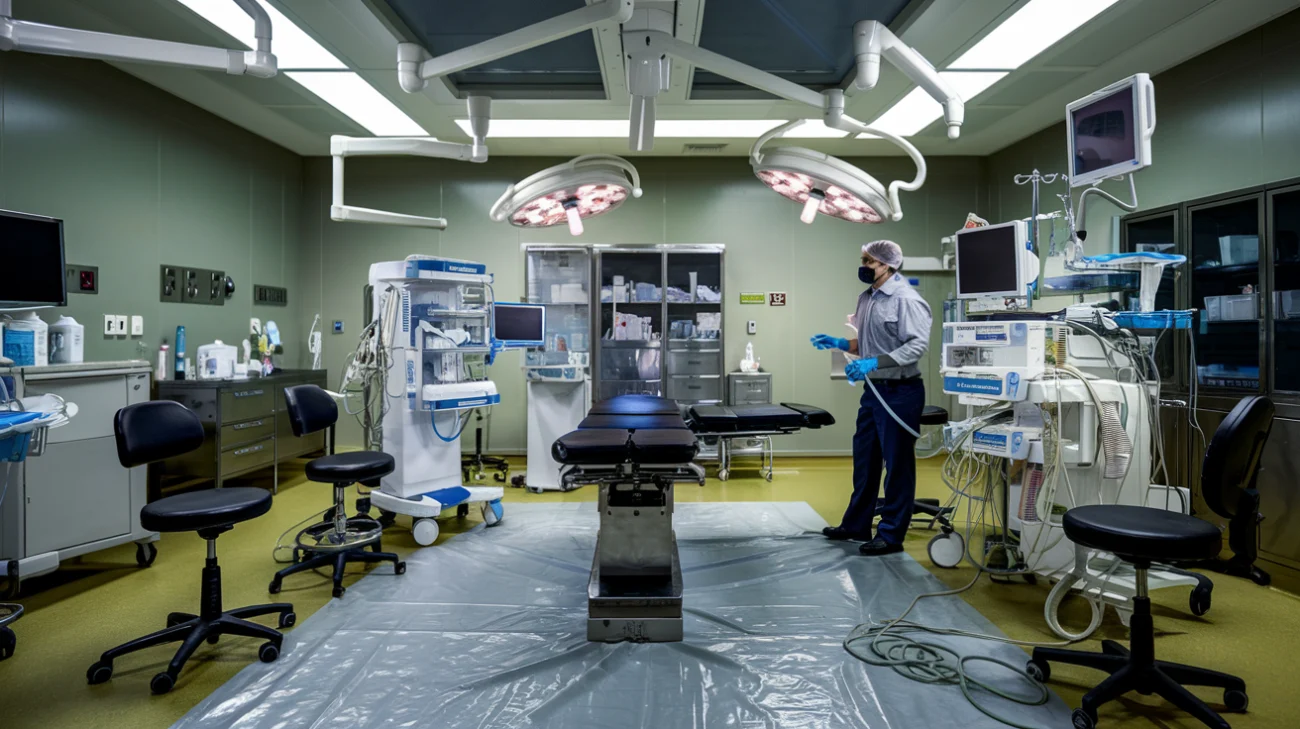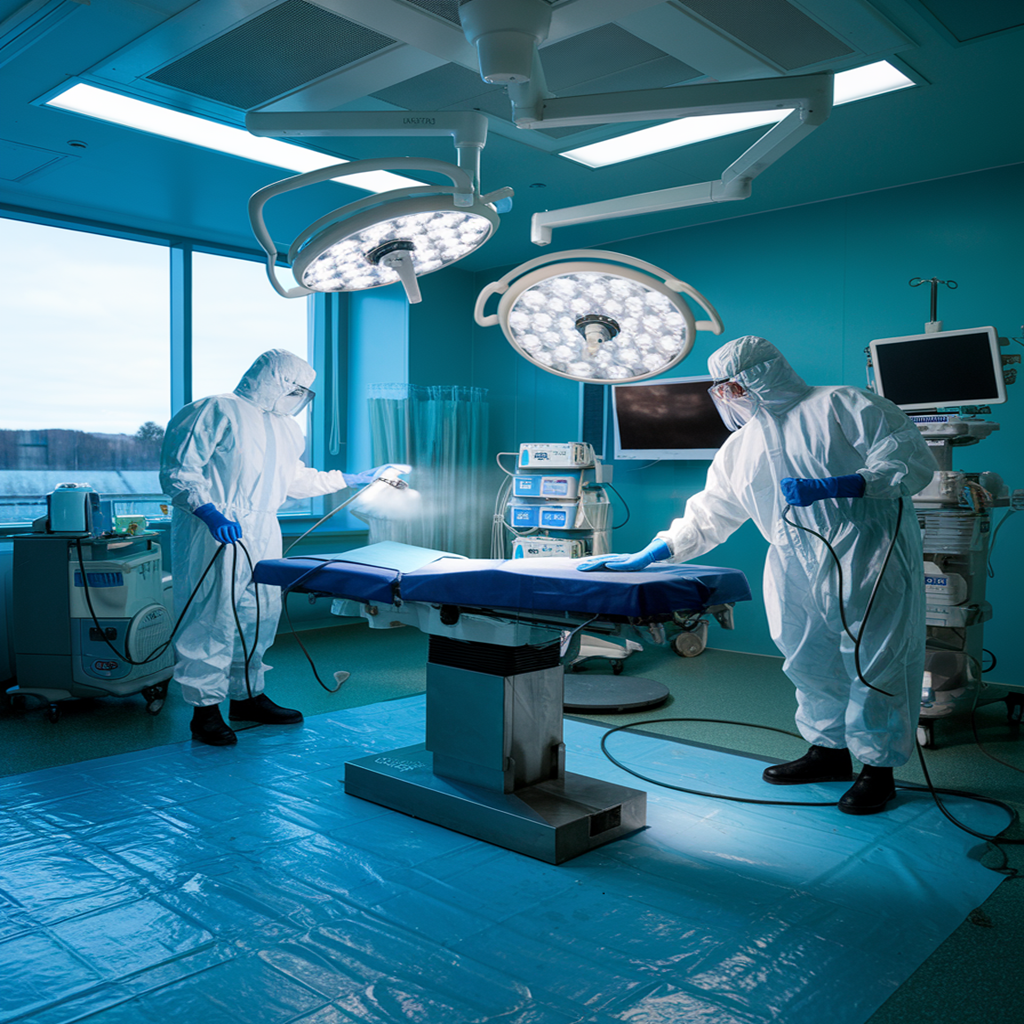Surgical rooms are one of the most delicate areas in a healthcare institution, needing extreme hygiene procedures to limit the chances of infection. Operating room cleaning is essential not only for patient care but also for the compliance to healthcare standards. Poor cleaning can result in Health Associated Infections (HAIs), Surgical Site Infections (SSIs), and cross-infection which will compromise patients’ health and the reputation of the hospital. This guide goes over useful strategies for deep cleaning and sterilization of surgical rooms for rest, pre, intra, and post-operative periods for infection control.
Significance of Operating Room Cleaning
To control the presence of dirt and contamination, the operating room (OR) must be cleaned and disinfected thoroughly beyond normal measures, as well as scrubbed clean of all potential sources of foreign matter, so that it can be considered germ-free. Six major factors could influence effective sanitation:
-
- Use of OSHA hospital cleaning standards for safety and health measures.
-
- Use of preventive nutrition practices according to CDC for contamination risk management.
-
- Continuous operational hygiene policies in hospitals for infection management.
-
- Regular supervision of established sanitation policies and procedures as well as evaluations for set standards and goals.
A Detailed Plan for Deep Cleaning and Sterilization of Surgical Rooms
1. Cleaning Before The Surgery Begins
Thorough cleaning and sanitation is essential prior to the commencement of a surgical procedure in order to provide a safe environment.
Key Steps:
-
- Take steps to eliminate unnecessary instrumentation and other supplies that can introduce contamination.
-
- Sanitize all surfaces such as switches, door handles, anesthesia carts, and monitor screens which are used most frequently.
-
- Vacuum dust and other allergens with HEPA filtered vacuum cleaners, as well as any airborne pathogens.
-
- Disinfect floors with mops using approved disinfectants as per EPA guidelines towards hospitals.
-
- Make sure that unnecessary surgical instruments which are kept in ready conditions are free from contamination..

hospital cleaning services cleaning services commercial cleaning
2. Procedures for Operating Room Cleaning During The Surgery
Blood, loosened particles, and body fluids have the potential to introduce infection during surgery. Continuous cleanliness helps to limit infection. Hospital Cleaning
Best Practices:
-
- To avoid cross-contamination, colored microfiber cloths and mops should be used.
-
- Hospital disinfectant wipes should be used for spill cleaning in order to reduce contamination.
-
- All medical personnel are expected to adhere to strict hand cleaning procedures.
-
- Infected surgical wastes need to be dealt with using bio-hazard procedures.
3. Post Surgery Operating Room Cleaning and Sterilization
After a surgical procedure is performed, comprehensive operating room cleaning is required in order to prepare for the next patient.
Essential Steps:
-
- Perform terminal cleaning and ensure that all surfaces, equipment, and furnishings are cleaned and disinfected.
-
- Apply steam cleaning methods to sterilize hard to reach portions of the cleaning area.
-
- Use ultraviolet light disinfection systems to remove any remaining pathogens.
-
- Following biohazard waste disposal procedures, properly segregate the biohazard waste.
-
- Control airborne contamination by maintaining the HVAC filtration and circulation of HEPA filtered air.

hospital cleaning services cleaning services commercial cleaning
Specialized Tools and Equipment for Cleaning Surgical Rooms
As with other parts of modern healthcare, specialized equipment is used to make equipment cleaning easier and guarantee proper sterilization. The following tools are indispensable:
| Equipment | Function |
| Autoclave | Destroys bacteria and viruses on surgical tools. |
| Electrostatic sprayers | Applies disinfectant constantly across all surfaces. |
| Robotic cleaning systems | Standardizes the cleaning process for better outcomes. |
| Personal protective equipment (PPE) | Protect the cleaners with dangerous substances. |
| Hospital-grade disinfectants | Most potent against pathogens and viruses for optimum efficacy. |
Compliance in the Cleaning of the Surgical Room
Health regulations require hospitals and healthcare facilities to maintain surgical rooms as uncontaminated areas. Compliance must be met with:
-
- OSHA’s sanitation regulations that provide guidelines for safe working conditions.
-
- Standards issued by AORN (Association of peri Operative Registered Nurses) for effective cleaning in the perioperative period.
-
- Utilization of EPA-registered disinfectants in hospital cleaning activities.
-
- Accreditation standards for healthcare facilities that control the cleaning of the environment.
Infection Control for the Surgical Room
Appropriate infection control is needed to manage the chance of SSIs and HAIs sustaining infections. Strategies put into practice by hospitals include:
-
- Implementation of handwashing routines to minimize the transmission of bacteria.
-
- Autoclaving and chemical disinfecting of surgical instruments.
-
- Use of HEPA filters and positive pressure ventilation to control airborne contaminations.
-
- Use of disposable cleaning materials and color-coded cleaning tools to prevent cross-contamination.

Frequently Asked Questions (FAQs)
Q1. How often should a surgical room be deep cleaned?
A1. Patients have unique needs and requirements. Keeping that need in mind, surgical rooms go under terminal cleaning after every procedure and full deep operating room cleaning at the end of the day.
Q2. What disinfectants are commonly used in hospital sanitation?
A2. Some of the most common disinfectants used for the cleaning of hospitals are EPA registered hydrogen peroxide, bleach solution and quaternary ammonium compounds.
Q3. How does UV light disinfection contribute to OR cleanliness?
A3. Implementation of UV light in surgical rooms helps with the sanitation as it helps eliminate bacteria, viruses, and fungi while further reducing the risk Infection.
Q4. Why are HEPA filters crucial for Operating Room Cleaning?
A4. HEPA filters capture airborne contaminants, which helps make sure that the air which is being circulated is not contaminated and this lower the chance of contracting infections through the air.
Q5. How do hospitals ensure compliance with surgical room cleaning standards?
A5. Hospitals perform scheduled cleaning audits, staff training and compliance exams to maintain the high level of medical cleaning standards. They also use very strict processes for verification and control of cleaning medical facilities.
Conclusion
There are specific requirements that need to be met by said healthcare facilities, leading to a meticulously sanitized environment so these patients can be as safe as possible before and after the procedure. Compliance, regulations, thorough and advanced sterilization techniques, meticulous cleaning protocols, along with evidence-based hospital sanitation practices help ensure safety from infection or and the assistance from certified professionals ensures superior standards in hygiene and infection control.
The link will guide you to see all the high-quality hospital cleaning services offered by LJDM https://ljdmbc.ca/hospital-cleaning


